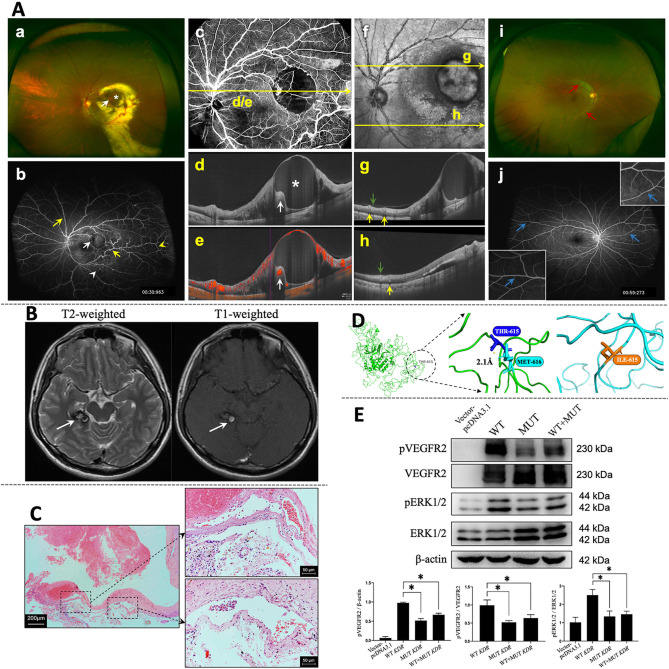
A novel mutation in KDR is associated with retinal venous beading and cerebral cavernous malformation


First described by Meredith in 1987, retinal venous beading (RVB) is an extremely rare and potentially vision-threatening disease,1 which is characterized by beading or sausage-like configuration of retinal veins. It can present with episodes of increased vascular permeability accompanied by lipid exudation, foveal edema, recurrent branch vein occlusion, retinal ischemia with retinal neovascularization, and vitreous hemorrhage,1 or exist solely and asymptomatically.2 Most reported RVB cases exhibited an autosomal dominant inheritance pattern, but some cases are still termed idiopathic or sporadic with no familial history.2 Up to now, the exact genetic background and pathogenesis of RVB are yet unclear.
